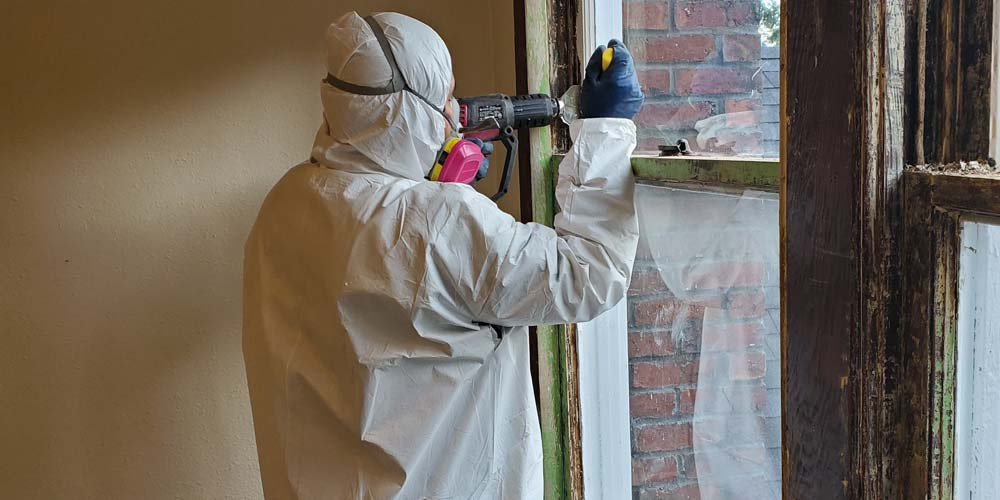Best Practices for Making Certain Safe and Extensive Lead Offense Abatement
Resolving lead violation reduction requires a multi-faceted technique to ensure both safety and security and compliance. Initial assessments making use of innovative detection methods such as XRF analyzers set the stage for an accurate understanding of contamination degrees. Integrating correct control techniques, including impermeable barriers and HEPA purification, paired with using individual safety tools (PPE) for employees, forms the foundation of a secure procedure. Precise cleanup methods, including HEPA vacuuming and wet-wiping, are critical. It's the final clearance process, including extensive inspections and lab screening, that really verifies a lead-free environment, making sure long-term safety. Just how do these techniques interconnect to assure thorough lead abatement?

First Assessment
Carrying out a first evaluation is a critical initial step in lead violation abatement. This stage encompasses a comprehensive assessment of the residential property to determine the visibility, extent, and certain places of lead-based dangers. Qualified professionals, such as qualified lead assessors or risk assessors, should do a comprehensive website inspection, making use of tools like X-ray fluorescence (XRF) analyzers to accurately identify and gauge lead focus in paint, dirt, soil, and water.
The analysis should additionally include a review of the structure's history, previous records, and any kind of complaints or health issues reported by owners - Lead Removal Contractors. Recording the searchings for diligently is essential, as these records form the basis for establishing a reliable abatement technique. A complete analysis additionally entails tasting and lab evaluation, which are critical to validate the presence of lead and guide succeeding actions
Additionally, it is essential to interact the outcomes transparently to all stakeholders, including homeowner, renters, and governing authorities. By making certain that the first analysis is conducted with accuracy and roughness, experts can lay a solid structure for a targeted and efficient lead reduction process, ultimately protecting public health and guaranteeing conformity with regulatory criteria.
Proper Containment
Appropriate control is essential to prevent the spread of lead pollutants during abatement activities. Efficiently managing control lessens the danger of lead dirt and debris moving to non-work areas, therefore protecting both the atmosphere and people outside the prompt job area. To achieve appropriate control, an airtight barrier of plastic bed linen should be developed around the work area, guaranteeing all seams and sides are safely sealed. Lead Removal Contractors. This obstacle ought to expand from floor to ceiling and be taped down to prevent any kind of leakages.

Normal inspections of the control area are essential to examine for breaches or weak points in the barrier. Any kind of determined issues must be promptly resolved to maintain the honesty of the containment. By sticking to these practices, abatement tasks can efficiently regulate lead contamination and reduce affiliated health dangers.
Worker Security
Guaranteeing employee defense is critical throughout lead abatement projects to avoid work direct exposure to unsafe lead particles. Necessary measures consist of using individual safety tools (PPE) such as respirators, gloves, and full-body fits especially made to block lead dust and fumes. Employees need to undertake extensive training on the proper usage and maintenance of PPE, including in shape screening for respirators to make certain maximum efficacy.
Engineering controls, such as regional exhaust ventilation systems, are vital in decreasing air-borne lead concentrations in the job setting. Management controls need to also be implemented, including limiting the duration of exposure and rotating workers to decrease Recommended Site individual exposure times. Routine clinical security and organic surveillance are crucial for very early discovery of lead absorption, making it possible for prompt treatment and therapy.
Moreover, establishing a decontamination protocol is vital. Workers need to comply with strict decontamination procedures before breaks and at the end of their shift to stop lead dirt from being lugged outside the job area. This includes extensive hand and face cleaning with lead-specific cleaner and transforming out of infected garments.
Careful Cleanup
Maintaining a secure job atmosphere extends past worker security and includes meticulous cleaning to make sure lead bits are thoroughly gotten rid of from the site. The process of thorough clean-up is crucial in preventing the recontamination of the moderated area and guarding both present and future residents.
To accomplish a comprehensive cleaning, all work locations should be methodically decontaminated. This entails the use of specialized HEPA (High-Efficiency Particulate Air) hoover and wet-wiping strategies to capture and get rid of fine lead dirt that may have chosen surfaces. It is critical to clean up all straight surfaces, consisting of floorings, window sills, and countertops, as well as vertical surface areas that might have caught lead fragments.
Employees must use suitable personal protective equipment (PPE) throughout cleanup to prevent direct exposure to residual lead dirt. Utilized cleaning materials such as wipes, sponges, and wipe heads ought to be thrown away based on contaminated materials disposal laws.

Final Clearance
Last clearance More Info is the vital ending stage of lead reduction that establishes whether the website is secure for reoccupation. This essential action entails thorough examination and testing to confirm that all lead dangers have been efficiently gotten rid of.

Last clearance testing not just secures future passengers but also makes sure conformity with local, state, and government guidelines. Furthermore, it works as a recorded validation of the reduction specialist's adherence to market ideal methods. Making sure an extensive and successful click reference final clearance is essential in guarding public health and wellness and cultivating rely on the abatement process.
Conclusion
Making sure safe and complete lead infraction abatement requires a complex method incorporating preliminary analyses with advanced discovery methods, efficient control strategies, rigid employee security protocols, and thorough cleaning procedures. The last clearance phase, including in-depth examinations and research laboratory screening, is critical to validate conformity with EPA requirements. Adherence to these best practices guarantees a secure setting for passengers, alleviates health and wellness dangers, and promotes regulatory requirements, therefore advertising public health and safety and security in lead-affected areas.